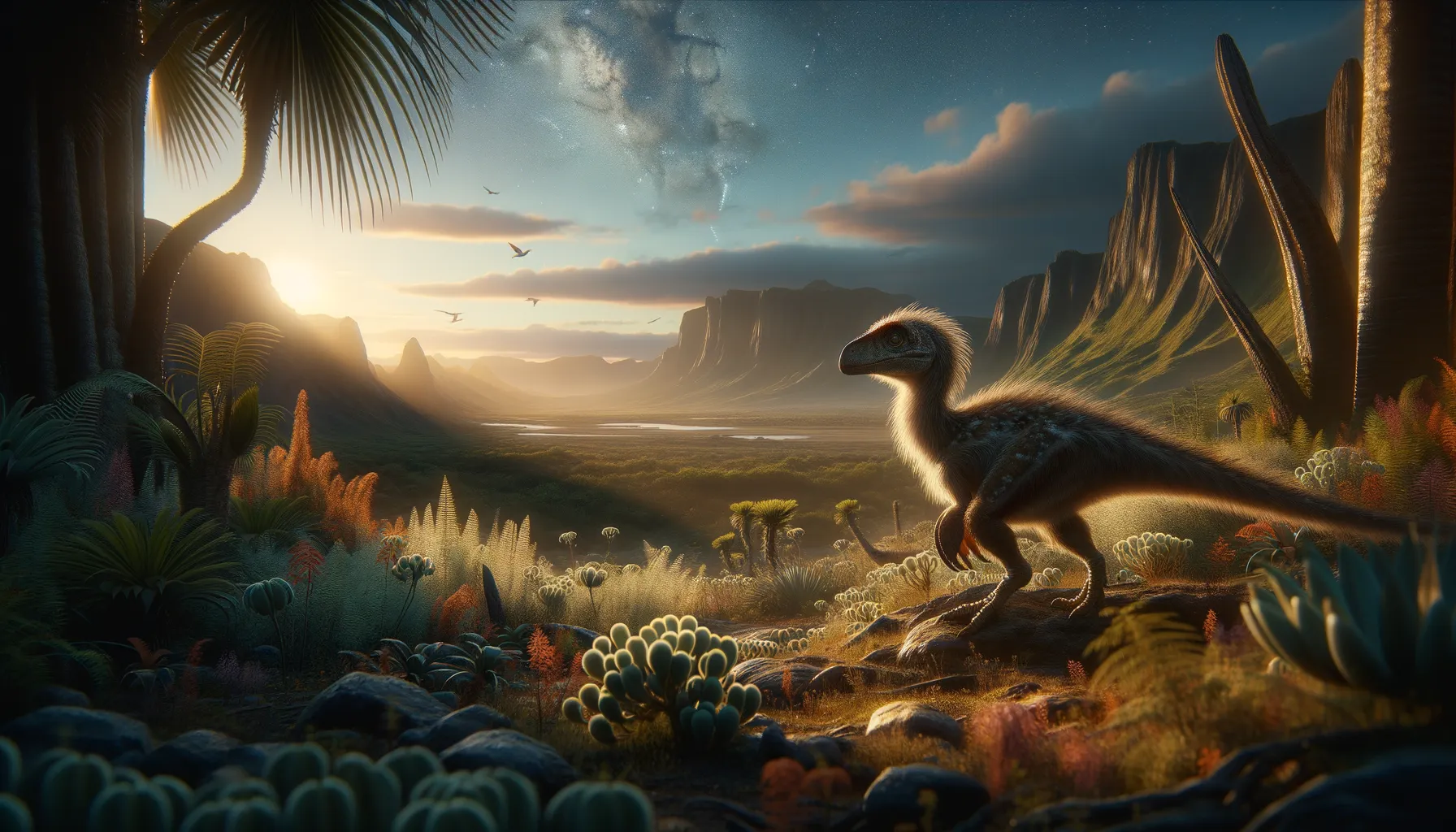
Wyleyia
A glimpse into early flight evolution.
Period
Cretaceous
Length
Roughly 30 centimeters long.
Height
Around the size of a small bird.
Weight
Approximately as light as a modern crow.
Wyleyia is a small theropod dinosaur from the Early Cretaceous period, primarily known from a single fossilized bone fragment. It is believed to have been bird-like, with features suggesting a lightweight frame and possible flight capabilities. Paleontologists have pieced together its habitat and behavior from similar small dinosaurs of its era. Although it is not as well-known as some other dinosaurs, Wyleyia provides valuable insight into the diversity and evolutionary paths of early theropods.
Diet
Wyleyia likely had an insectivorous diet, feeding primarily on insects available in its environment. Its small size suggests it was adept at catching small prey, possibly using quick, precise movements.
Hunting
Being small and possibly agile, Wyleyia likely relied on speed and stealth to catch its prey. Its hunting would have involved pursuit and capture of insects on the wing or ground.
Environmental challenges
Living in the Early Cretaceous, Wyleyia faced predators larger than itself. Competition for food with other small dinosaurs and early birds would have made survival challenging. Environmental changes, such as seasonal shifts, would have impacted its food sources, requiring adaptation and keen survival tactics.
Speed
Estimated to be moderate, allowing for basic movement.
Lifespan
Exact lifespan unknown, but typical of small theropods.
First discovery
Discovered in Sussex, England, in 1970.
Fun Facts
- Wyleyia was a small bird-like dinosaur that lived during the early Cretaceous period, around 140 million years ago.
- It was discovered in what is now England, providing important clues about the types of creatures that lived there long ago.
- Wyleyia is known from just a single fossilized bone, which makes it one of the most mysterious dinosaurs.
- Despite its bird-like appearance, Wyleyia is classified as a dinosaur because it retains many dinosaurian characteristics.
- This dinosaur is often used as a reference point in studies exploring the link between modern birds and their dinosaur ancestors.
- Wyleyia's name comes from the geologist Adam Sedgwick's son, Wyley, honoring a suggestion from the discoverer.
- Because of the limited fossil evidence, debates continue about Wyleyia's exact appearance and place in the dinosaur family tree.
Growth and Development
Wyleyia likely followed the growth pattern of small theropods, with fast maturation to avoid predation. The young were probably vulnerable, with high mortality rates pushing rapid growth rates. Studies suggest that its development might have shared similarities with early birds, providing evolutionary insights.
Habitat
It inhabited the lush, warm climates of Early Cretaceous England, which was rich in vegetation and insect life. The environment was likely a mix of forest and open areas, offering both shelter and hunting grounds. Its adaptability to various habitats might have played a role in its survival strategy.
Interaction with other species
Wyleyia would have interacted with both predators and prey in its ecosystem. While hunting insects, it might have competed with other small vertebrates and early avian species. It shared its habitat with various herbivorous dinosaurs that impacted the environment and resource availability.
Natural lifespan
Its natural lifespan might have paralleled that of similar small theropods, facing numerous survival pressures.
Reproduction
Like many small theropods, Wyleyia probably reproduced by laying eggs in nests constructed on the ground. Parental care aspects are unknown but could involve guarding the nest and young until they were self-sufficient. Fossil evidence of closely related species suggests communal nesting behaviors.
Social behaviour
Wyleyia's social behavior is largely speculative but might have included solitary hunting and nest-focused interactions during the breeding season. There is a possibility of social groups forming for better protection against predators, following patterns seen in other small theropod species.
Fossil locations
The primary fossil evidence of Wyleyia comes from Sussex, England, illustrating its geographic presence during the Early Cretaceous. Its fragmentary fossils limit comprehensive location data, but its relatives give clues about its broader geographic range. Continued discoveries could shed more light on its distribution.
